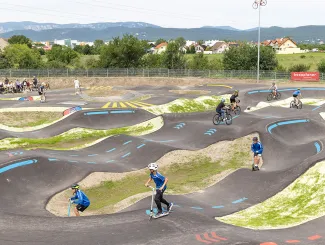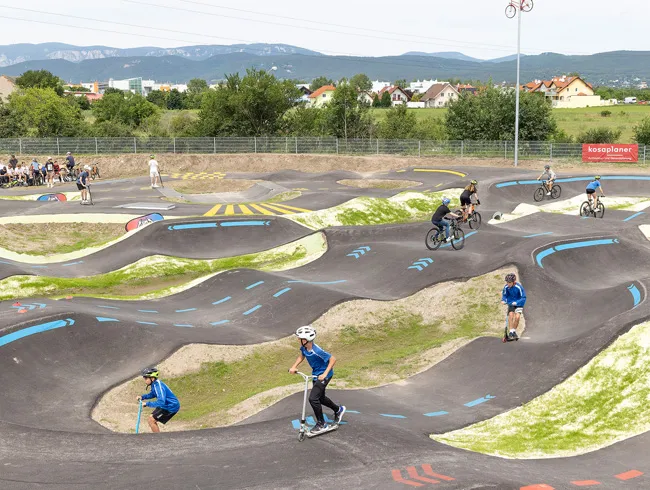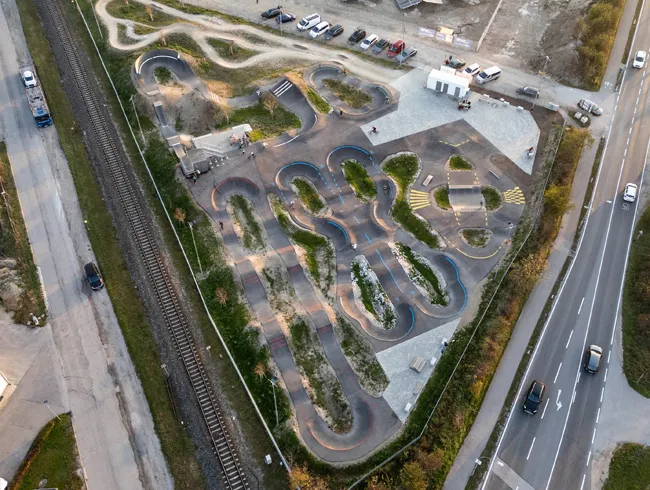
Pump & jump tracks: adaptable and attractive

The pump & jump track is still under the radar for many, but steadily gaining in popularity. In this interview, Dirk Scheumann, founder and managing director of Schneestern, a company based in the Allgäu region of Germany and specialising in action sports, reveals why facilities for this informal sport are becoming increasingly popular, what factors need to be considered when designing them, and what additional benefits they offer to society, communities and sport.

(c) Stadt Wiener Neustadt

(c) Kai Siebdrath
The pump & jump track evolved out of the classic pump track. It originated in the early 2000s, originally in mountain biking (MTB) – specifically as a form of training for pumping, i.e. generating speed through body movement rather than pedalling. The early facilities were mostly built from dirt (dirt parks), located outside town centres and required a lot of maintenance.
The first asphalt pump track in Chur, Switzerland, in 2012 marked a turning point. The use of asphalt made the facility significantly more robust and easier to maintain – regular ‘reshaping’ of the track was no longer necessary. At the same time, it opened up new opportunities for other sports equipment such as skateboards, inline skates and scooters. The pump track has thus been transformed into a multifunctional exercise space for a wide range of target groups. Nevertheless, dirt parks still have their place in facilities heavily geared towards MTBs – particularly as a complementary skills centre in combination with asphalted areas. They are used specifically to develop technical skills in MTB training.
